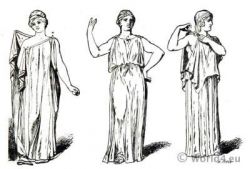-
News
Sights of Interest in Greece
-

Plato’s Academy
08-06-2013 13:01Plato’s Academy is the world famous School founded by the ancient Greek philosopher Plato, and is considered the first university ever. Nowadays it is an archaeological site located near present Lenorman Street near Kerameikos district.
The Academy was a gymnasium and park about a mile outside Athens, sacred to the local hero Akademos. In around 387 B.C., Plato bought land in this suburb and set up a school of philosophy there, aiming to train the future leaders of Athens and other Greek states. Students at the early Academy did not pay fees, and lessons probably took place in the form of seminars similar to the disputations portrayed in Plato’s written Dialogues. Teachings emphasized mathematics and the Platonic reasoning method known as dialectic, become distinct from all prior Greek schools of advanced study, which taught only rhetoric, poetry or the argumentative techniques of the sophists.
Two of the greatest students of the Platonic Academy were the mathematician-astronomer Eudoxus of Knidos and the philosopher Aristotle. Aristotle was considered Plato’s possible successor as president, but after his death Academy members voted Plato’s nephew Speusippus as head in 347 B.C. Aristotle eventually set up an Athenian philosophical school of his own, called the Lyceum.
After the Romans annexed Greece in 146 B.C., the Academy attracted students from all over the Roman and later the Byzantine Empire. During the Roman conquest of Athens in 86 BC the grove was destroyed by Sulla. The Academy survived more than 900 years from its founding, until 529 C.E. when the Christian Byzantine emperor Justinian closed it forever along with all the educational centers of Athens, thus defining the actual end of ancient world. The school’s name has produced the English common noun academy, meaning a place of rigorous advanced study.
The excavations began in 1929 by the Egyptian of admirer of Plato architect P. Aristofrona on his own initiative, diligence and spending until 1940. The excavations continued by F. Stavropoullos from 1955 to 1963 at the expense of the Archaeological Society.
The most important monuments visible today the Academy of Plato are on three points: The Holy House, the Gymnasium and the Square Peristyle. The Holy House is the relics of the sparse population of the area before Platonic Academy was settled here in high school. The Gymnasium consists of visible parts of a large rectangular courtyard of the Palaestra, surrounded by elongated indoors. In another aspect, the spaces in the northern are part of the library of the School of Plato. The architectural form and function of the Square Peristyle is unclear. One interpretation is that this is the real Palestra Gymnasium. Clay painted metopes of the 6th century found here show the existence of an older public building.
-
Top bews!
-
Relative articles
















